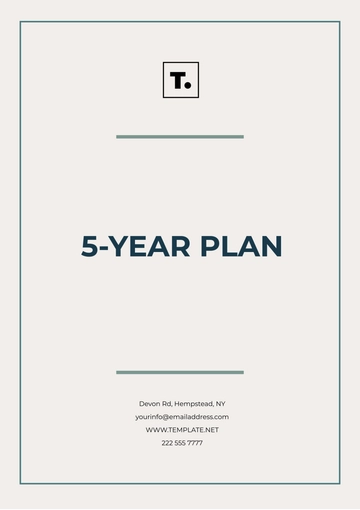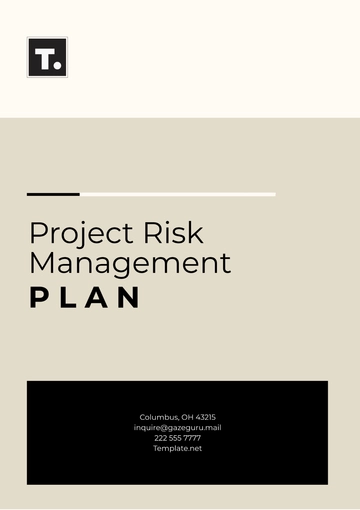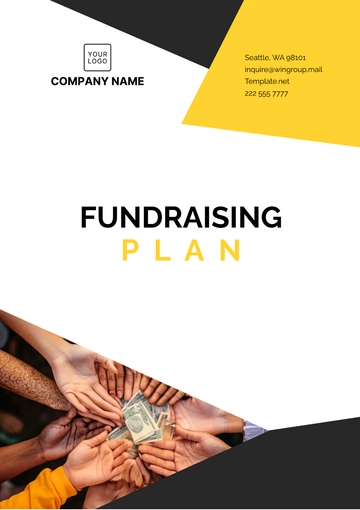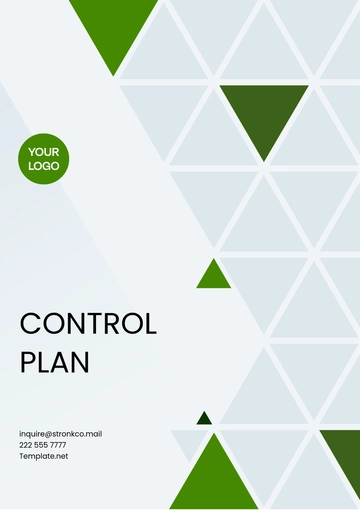Free Customer Service Plan

I. Introduction
This plan outlines [Your Company Name]’s strategy to enhance customer satisfaction throughout the year [2052]. It reflects the company’s commitment to prioritizing customer needs, fostering trust, and delivering exceptional experiences. By addressing key factors such as service quality, communication, and technology, [Your Company Name] aims to strengthen relationships and build lasting loyalty. The structured approach will ensure that every department contributes to this mission.
II. Identifying Customer Needs
Understanding customer needs is fundamental to creating impactful strategies. This section focuses on gathering and analyzing data to identify these needs effectively.
Customer Surveys: Periodic surveys will collect insights on customer preferences, pain points, and expectations. Analysis of this data will guide decision-making.
Feedback Channels: Easy-to-use feedback mechanisms, such as online forms and in-app ratings, will be introduced. Continuous input allows for real-time adjustments.
Customer Behavior Analytics: Analyzing past interactions, purchase history, and trends helps anticipate future needs. Proactive approaches foster satisfaction.
Competitor Benchmarking: Studying competitors’ strategies offers insights into industry standards and opportunities for differentiation. Competitive insights inform innovation.
Customer Focus Groups: Interactive sessions with focus groups will provide qualitative data on user experiences. Engaging directly with customers deepens understanding.
III. Enhancing Communication Channels
Clear, effective communication is a cornerstone of customer satisfaction. This section outlines improvements to communication processes across all touchpoints.
Multi-Channel Availability: The company will ensure customers can reach support through phone, email, chat, and social media. Accessibility boosts satisfaction.
Response Time Goals: Specific benchmarks for response times will be established, such as resolving inquiries within [24] hours. Prompt responses build trust.
Personalized Messaging: Communication will be tailored based on customer history and preferences. Personalization creates meaningful connections.
Proactive Updates: Customers will receive timely updates on their requests or transactions. Transparency reduces frustration.
Training for Representatives: Employees will receive training on clear, empathetic, and professional communication. Skilled representatives leave positive impressions.
IV. Leveraging Technology
Technology plays a vital role in delivering seamless customer experiences. This section outlines the tools and systems that will be employed to enhance satisfaction.
Technology | Purpose | Expected Outcome |
|---|---|---|
AI Chatbots | Automating responses for common inquiries | Reduced wait times |
Customer Relationship Management (CRM) | Centralizing customer data for personalized service | Enhanced customer interactions |
Analytics Dashboards | Tracking satisfaction metrics in real time | Proactive issue resolution |
Mobile App Enhancements | Adding self-service options to the app | Improved convenience |
Knowledge Management System | Providing representatives with quick access to information | Faster issue resolution |
Efficiency Gains: Technology reduces manual processes, enabling faster and more accurate service. Automation ensures consistent outcomes.
Personalization: Advanced tools like CRM systems allow tailored interactions, which resonate more with customers. Individualized service fosters loyalty.
Convenience: Tools such as mobile apps empower customers to solve issues independently. This appeals to tech-savvy demographics.
Data-Driven Decisions: Analytics tools help identify trends, enabling proactive measures to address issues. Early interventions prevent dissatisfaction.
Scalability: Technology solutions can scale with company growth, ensuring sustained satisfaction as the customer base expands.
V. Strengthening Employee Engagement
Employees are integral to delivering superior customer experiences. This section emphasizes the importance of empowering staff and fostering a positive work culture.
Comprehensive Training: Regular workshops and role-playing sessions will enhance employee skills. Well-trained employees are better equipped to handle diverse customer needs.
Recognition Programs: Rewarding employees for exceptional service fosters motivation and a customer-first mindset. Acknowledging efforts reinforces positive behavior.
Support Systems: Tools and resources will be provided to support employees in resolving complex issues. Empowered staff ensures better service delivery.
Open Communication: Employees will be encouraged to share insights and suggestions for improving processes. Their input reflects frontline realities.
Performance Reviews: Constructive feedback through regular reviews helps employees refine their approach. Personalized growth plans keep teams engaged.
VI. Customer Loyalty Programs
Loyalty programs incentivize customers to maintain long-term relationships with the company. This section describes initiatives to reward repeat customers.
Points-Based Rewards: Customers earn points for every interaction or purchase, redeemable for discounts or exclusive perks. Loyalty incentives encourage repeat business.
Tiered Memberships: Introducing tiers provides additional benefits for higher levels of engagement. Tiered systems foster aspirational loyalty.
Special Access Benefits: Loyal customers receive early access to promotions, events, or new services. Exclusivity enhances the customer experience.
Feedback Incentives: Offering rewards for providing feedback encourages participation and data collection. Insights gathered drive improvements.
Personalized Offers: Loyalty programs will include personalized recommendations and discounts. Customization increases program effectiveness.
VII. Budget for Implementation
Allocating adequate resources ensures the successful execution of the plan. This section breaks down the budget required for each initiative.
Category | Allocation |
|---|---|
Training Programs | $500,000 |
Technology Upgrades | $1,200,000 |
Marketing for Feedback | $300,000 |
Loyalty Programs | $400,000 |
Miscellaneous Initiatives | $100,000 |
Strategic Allocation: Funds are allocated to critical areas such as technology, training, and customer engagement. This ensures high-impact results.
Cost Efficiency: Resources are planned to maximize value while minimizing waste. Every dollar is targeted at enhancing satisfaction.
Stakeholder Transparency: The budget is shared with stakeholders to ensure clarity and alignment. Transparency builds trust in the process.
Contingency Planning: A portion of the budget is reserved for unforeseen challenges. Flexibility safeguards against disruptions.
Periodic Audits: Financial usage will be reviewed quarterly to track expenditures. Reviews maintain accountability.
VIII. Timeline
A structured timeline ensures timely execution of the plan’s initiatives. This section provides a month-by-month breakdown of key milestones for the year [2052].
Month | Milestone |
|---|---|
[Month] - [Month] | Employee training programs launch |
[Month] - [Month] | Feedback mechanisms implemented |
[Month] - [Month] | Technology upgrades completed |
[Month] - [Month] | Loyalty program pilot phase |
[Month] - [Month] | Survey results analyzed and strategies adjusted |
[Month] - [Month] | Comprehensive review of customer satisfaction metrics |
The timeline breaks down actions into manageable phases. Sequential execution ensures smooth operations. Milestones are tied to key goals, ensuring relevance. Each step drives progress toward satisfaction targets. Regular reviews enable adjustments based on progress. Flexibility enhances overall success.
IX. Key Metrics for Evaluation
Measuring success is essential for refining strategies. This section identifies key performance indicators (KPIs) to evaluate the plan’s effectiveness.
Metric | Description | Target |
|---|---|---|
Customer Satisfaction Score | Average rating from customer surveys | 4.7/5 |
Net Promoter Score (NPS) | Likelihood of customers recommending the brand | 75+ |
First Contact Resolution | Percentage of issues resolved in one interaction | 90% |
Customer Retention Rate | Percentage of repeat customers | 85% |
Response Time | Average time to resolve inquiries | Under 24 hours |
Benchmarking Success: Metrics like NPS and retention rate provide clear indicators of satisfaction. High scores validate strategy effectiveness.
Continuous Monitoring: Regular tracking ensures that any deviations from targets are addressed promptly. Agile responses improve outcomes.
Holistic Insights: Metrics cover all aspects, from resolution speed to long-term retention. A balanced approach ensures comprehensive evaluation.
Actionable Data: Analyzing these metrics enables data-driven decisions for future improvements. Insightful analysis builds stronger plans.
Transparency: Sharing results internally promotes accountability and alignment with goals. Everyone works towards the same vision.
X. Conclusion
[Your Company Name] is committed to achieving industry-leading levels of customer satisfaction in [2052]. Through targeted initiatives, transparent communication, and continuous evaluation, this plan lays a solid foundation for enhanced customer experiences. As the company implements this plan, it will not only improve satisfaction scores but also strengthen long-term customer loyalty and trust.
- 100% Customizable, free editor
- Access 1 Million+ Templates, photo’s & graphics
- Download or share as a template
- Click and replace photos, graphics, text, backgrounds
- Resize, crop, AI write & more
- Access advanced editor
Develop an effective strategy with the Customer Service Plan Template available on Template.net. This editable and customizable template includes sections for defining objectives and performance measures. Adapt it using the Ai Editor Tool to align with your business goals and customer expectations. Leverage this plan template to elevate your customer service standards.
You may also like
- Finance Plan
- Construction Plan
- Sales Plan
- Development Plan
- Career Plan
- Budget Plan
- HR Plan
- Education Plan
- Transition Plan
- Work Plan
- Training Plan
- Communication Plan
- Operation Plan
- Health And Safety Plan
- Strategy Plan
- Professional Development Plan
- Advertising Plan
- Risk Management Plan
- Restaurant Plan
- School Plan
- Nursing Home Patient Care Plan
- Nursing Care Plan
- Plan Event
- Startup Plan
- Social Media Plan
- Staffing Plan
- Annual Plan
- Content Plan
- Payment Plan
- Implementation Plan
- Hotel Plan
- Workout Plan
- Accounting Plan
- Campaign Plan
- Essay Plan
- 30 60 90 Day Plan
- Research Plan
- Recruitment Plan
- 90 Day Plan
- Quarterly Plan
- Emergency Plan
- 5 Year Plan
- Gym Plan
- Personal Plan
- IT and Software Plan
- Treatment Plan
- Real Estate Plan
- Law Firm Plan
- Healthcare Plan
- Improvement Plan
- Media Plan
- 5 Year Business Plan
- Learning Plan
- Marketing Campaign Plan
- Travel Agency Plan
- Cleaning Services Plan
- Interior Design Plan
- Performance Plan
- PR Plan
- Birth Plan
- Life Plan
- SEO Plan
- Disaster Recovery Plan
- Continuity Plan
- Launch Plan
- Legal Plan
- Behavior Plan
- Performance Improvement Plan
- Salon Plan
- Security Plan
- Security Management Plan
- Employee Development Plan
- Quality Plan
- Service Improvement Plan
- Growth Plan
- Incident Response Plan
- Basketball Plan
- Emergency Action Plan
- Product Launch Plan
- Spa Plan
- Employee Training Plan
- Data Analysis Plan
- Employee Action Plan
- Territory Plan
- Audit Plan
- Classroom Plan
- Activity Plan
- Parenting Plan
- Care Plan
- Project Execution Plan
- Exercise Plan
- Internship Plan
- Software Development Plan
- Continuous Improvement Plan
- Leave Plan
- 90 Day Sales Plan
- Advertising Agency Plan
- Employee Transition Plan
- Smart Action Plan
- Workplace Safety Plan
- Behavior Change Plan
- Contingency Plan
- Continuity of Operations Plan
- Health Plan
- Quality Control Plan
- Self Plan
- Sports Development Plan
- Change Management Plan
- Ecommerce Plan
- Personal Financial Plan
- Process Improvement Plan
- 30-60-90 Day Sales Plan
- Crisis Management Plan
- Engagement Plan
- Execution Plan
- Pandemic Plan
- Quality Assurance Plan
- Service Continuity Plan
- Agile Project Plan
- Fundraising Plan
- Job Transition Plan
- Asset Maintenance Plan
- Maintenance Plan
- Software Test Plan
- Staff Training and Development Plan
- 3 Year Plan
- Brand Activation Plan
- Release Plan
- Resource Plan
- Risk Mitigation Plan
- Teacher Plan
- 30 60 90 Day Plan for New Manager
- Food Safety Plan
- Food Truck Plan
- Hiring Plan
- Quality Management Plan
- Wellness Plan
- Behavior Intervention Plan
- Bonus Plan
- Investment Plan
- Maternity Leave Plan
- Pandemic Response Plan
- Succession Planning
- Coaching Plan
- Configuration Management Plan
- Remote Work Plan
- Self Care Plan
- Teaching Plan
- 100-Day Plan
- HACCP Plan
- Student Plan
- Sustainability Plan
- 30 60 90 Day Plan for Interview
- Access Plan
- Site Specific Safety Plan





























